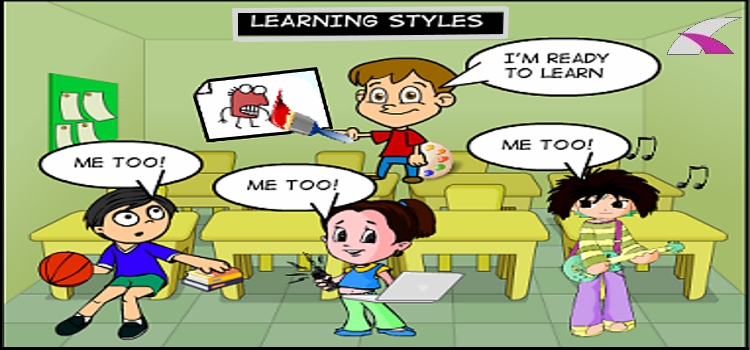In one of my blogs I wrote about teaching styles in
'The Art of Teaching English', today I'm going to write about learning styles. As different teachers have different teaching techniques, different students will have different learning styles.
Learning styles refer to the way that people learn and everyone has a mix of learning styles although, some may find that they have a dominant style of learning, with less use of the other styles. Learning styles group the common ways that people learn.
Visual learners like to use images, pictures, colours, and maps to gather information and communicate with others and can easily visualize objects, plans and outcomes. They have a good spatial sense, which gives them a good sense of direction. Visual learners love drawing and doodling so activities that incorporate drawing or making presentations are good to teach. Also, writing words on the board or having students read information in their textbooks or on the internet will make them receptive to visual input and be able to absorb the material you present.
Aural learners like to work with sounds and music and typically have a good sense of rhythm. These learners are able to sing, play a musical instrument, or identify the sounds of different instruments. TV shows and other media are a good source of teaching activities for aural learners as are listening to lectures and themselves.
People who use this style find it easy to express themselves, both in writing and verbally and love reading and writing. They know the meaning of many words, and regularly make an effort to find meanings of new words which they will then use when speaking to others. These learners are natural language learners and thrive on making rhymes, puns, poems etc therefore any speaking and writing activity will be welcomed by them.
As babies we are all physical learners since we rely on sense of touch to grasp new ideas but, this changes when we begin to talk and then we start to develop or incorporate one or more of the other learning styles. If you are a physical learner it's likely you like sports and exercise, and other physical activities such as gardening or woodwork. Physical learners will think about ideas and problems while they exercise and would sooner go for a run or walk if something is bothering them, rather than sit at home. Physical activities such as charades and role play are great for teaching these kind of learners.
A logical leaner likes to use their brain for logical and mathematical reasoning, can recognize patterns easily and work well with numbers. Activities for this style of learner should use the linguistic approach as this is known as the science of language because it defines rules and patterns in grammar, syntax and phonology.
These learners learn through interaction and benefit from working in groups rather than individually. Discussion groups are appreciated by these learners and will allow the more advanced students to support and encourage their classmates who might be struggling.
In contrast to the social learner, the solitary learner prefers to study alone and may struggle with group activities or discussions. Try to include some individual learning periods in class so that these students will have their learning needs met. Another way these students will be able to learn is to give homework to encourage independent study.
If you take a TEFL course with a view to becoming an English teacher, you will learn how to apply your newly found knowledge during your TEFL course and reap rewards when you see your students learning a new language.
Click here to arrange an interview with Oxbridge TEFL and you could be teaching within a month.
